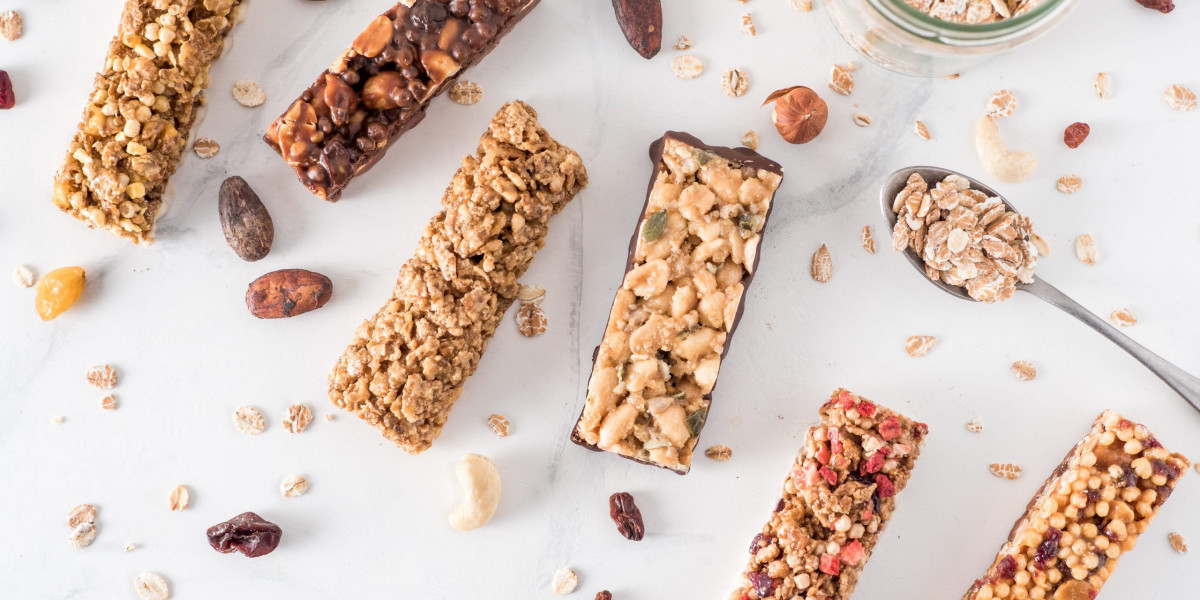The global protein bar market is undergoing a significant transformation, driven by evolving consumer preferences, increasing health consciousness, and lifestyle shifts. Among the most notable trends reshaping the industry are the growing demand for plant-based ingredients and the rising popularity of clean-label products. As the market diversifies, manufacturers are compelled to innovate, adapt, and align with these changing dynamics to stay competitive.
Market Overview
Valued at over USD 4.5 billion in 2023, the protein bar market is projected to witness steady growth with a CAGR of 7–9% through 2030. This growth is largely fueled by the increasing adoption of convenient, on-the-go nutrition solutions among busy consumers, fitness enthusiasts, and those embracing healthier snacking habits.
Plant-Based Protein Bars: The New Normal
One of the most transformative forces in the protein bar segment is the surge in plant-based alternatives. Once a niche, plant-based protein bars have rapidly entered the mainstream, driven by veganism, environmental concerns, lactose intolerance, and growing awareness around animal welfare.
Key Drivers:
- Health & Wellness Trends: Consumers are leaning toward plant-based proteins such as pea, brown rice, hemp, and pumpkin seed, considering them easier to digest and more sustainable.
- Environmental Impact: Plant-based options have a smaller carbon footprint, making them attractive to eco-conscious buyers.
- Market Expansion: Major brands and startups alike are launching new SKUs featuring vegan certifications, appealing flavors, and competitive protein content to meet demand.
In 2024, plant-based protein bars are expected to account for over 30% of total market share, up from 20% in 2020.
Clean Label: Transparency Builds Trust
Consumers today want to recognize every ingredient in the foods they consume. The clean label movement—emphasizing minimal processing, non-GMO ingredients, and absence of artificial additives—has significantly impacted the protein bar industry.
Consumer Expectations Include:
- Short ingredient lists
- No artificial sweeteners, preservatives, or colors
- Organic or non-GMO certifications
- Natural sources of protein and sweeteners (like honey, dates, or coconut nectar)
Clean label products are increasingly preferred not just by health-conscious individuals, but by mainstream consumers who are wary of synthetic ingredients and hidden sugars.
Innovation and Product Development
To meet these evolving preferences, protein bar manufacturers are investing heavily in R&D. Some of the emerging innovations include:
- Functional Additives: Adaptogens, probiotics, and superfoods for enhanced wellness benefits.
- Sustainable Packaging: Compostable wrappers and recyclable materials for eco-friendly appeal.
- Texture & Taste Enhancements: Soft-baked or layered bars with indulgent yet healthy ingredients like almond butter, dark chocolate, and chia seeds.
Regional Trends
- North America remains the largest market, led by U.S. demand for fitness and wellness products.
- Europe is seeing increased growth in clean-label and organic protein bars, particularly in Germany and the UK.
- Asia-Pacific is an emerging region, with growing demand in urban centers and rising disposable incomes contributing to the market surge.
Challenges Ahead
Despite its growth, the protein bar market faces several hurdles:
- High competition and brand saturation
- Balancing taste and nutrition
- Cost of premium ingredients and sustainable sourcing
Brands that can address these challenges while delivering innovation, transparency, and functionality are likely to dominate.
Conclusion
The protein bar market is evolving beyond simple post-workout snacks into a reflection of consumer values around health, sustainability, and transparency. The surge in plant-based options and the push for clean-label integrity are not just trends—they’re becoming the new industry standards. Companies that embrace these shifts and stay agile in innovation will lead the next chapter of growth in this dynamic market.
Learn more : https://www.pristinemarketinsights.com/protein-bar-market-report









